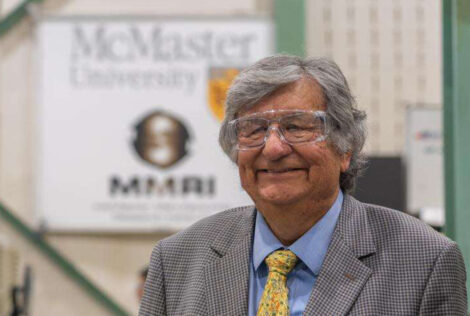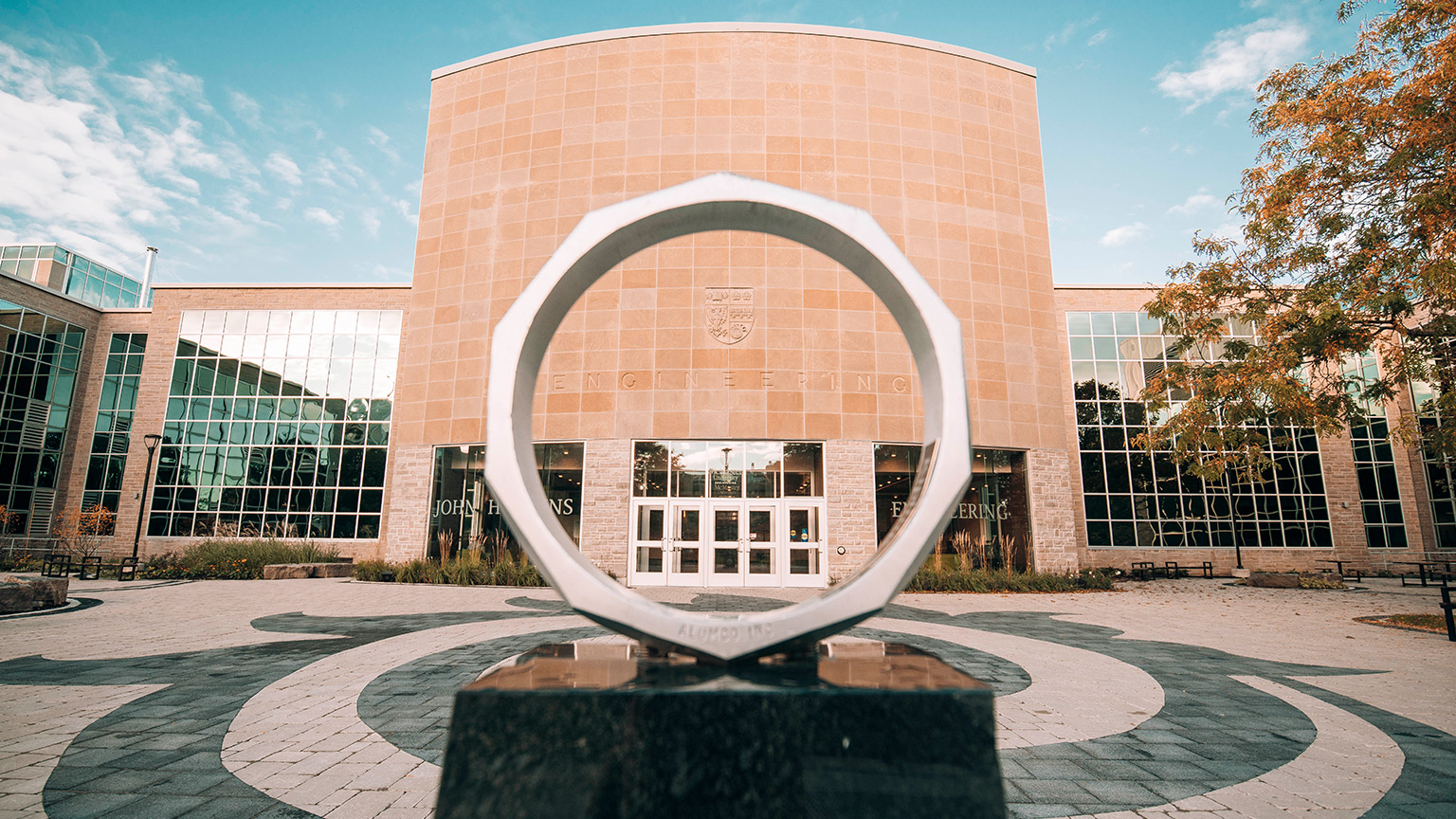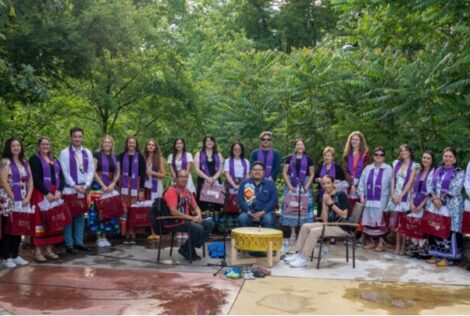

Describing Barry Hill as a well-rounded man is a vast understatement.
In the space of an hour-long stroll across campus, Hill recalls the details of his 1967 Master’s thesis related to high altitude research, stops at JHE’s lobby piano to play a quick tune, pulls out his smartphone to check the price of soybean futures, and talks about a career spent planning power generation facilities for Ontario Hydro.
And following nearly three decades as a professional engineer, Hill has transformed himself into a successful commercial farmer.
A Mohawk from Six Nations of the Grand River, he is also an amateur historian, a published author, an organist, and a recognized and beloved “Community Treasure” in his home community.
The only child of a schoolteacher mother and a farmer father, Hill grew up on a small Ohsweken farm. Ironically enough for a man destined to a career in the electrical utility industry, the family’s property was actually without electricity until 1956.
From a young age, Hill says he knew he wanted to be an engineer.
At 14, he earned a scholarship to the prestigious Upper Canada College boarding school, and from there, joined McMaster’s newly-minted engineering faculty in 1962.
Along with the attractive novelty of the nuclear reactor, Hill says the school’s offerings of courses in reliability engineering, value engineering and business marked the engineering program as modern and forward-thinking. “McMaster was a small school and quite innovative for its time,” he says. “It allowed you to think outside of the box, as they say today.”
Tuition was $700 for the year and Dr. Hodgins was still teaching. The second-floor mechanical labs and Whidden Hall, where he lived in residence, were new when he arrived, and one of his strongest memories of the school is the ongoing construction underway in those years.
Another lasting memory is the beauty of the bells ringing at Divinity College. “It felt very Ivy League,” Hill recalls.
One of six mechanical engineering graduates in 1966, Hill returned to McMaster to earn a Master’s degree in mechanical engineering design. His work on control systems led him to a 26-year-career with Ontario Hydro.
“I spent a great number of years managing impossible projects,” says Hill, who was involved in designing Lakeview, Nanticoke and Darlington generating stations. He adds that he quickly learned how engineering is often about managing deadlines, putting the right people in the right jobs and selling projects to management.
During his years with Hydro, he had the opportunity to impart some of his Indigenous values to the organization, establishing a native circle for employees, and contributing to the organization’s sustainable development policy.
While school, and then later his career, moved him out of the Six Nations community, Hill maintained a connection to his Mohawk roots. Rather than travelling to a Muskoka cottage, he purchased a log cabin in Ohsweken where his family spent summers and holidays.
And it was during those summers in the log cabin that Hill began what he describes as “gardening gone mad,” a hobby so successful that he ended up transporting his vegetables to his Mississauga neighbourhood to sell.
Eventually Hill decided he could grow fields of crops with the same effort he was dedicating to his vegetable garden. So with an engineer’s diligent preparation, he enrolled in crop farming correspondence courses from the University of Guelph, and planted a soybean field.
Upon retirement from Hydro, Hill relocated to Ohsweken, and along with his wife Cheryle, founded what has become Hillsfield Farms, a successful 2,000 acre grain and oilseeds farm.
But his efforts and innovations have gone far beyond ensuring his own success. Hill helped introduce new crops and promote agribusiness in the Six Nations community, and organized his fellow farmers into the First Nations Agri Group co-op for bulk seed and fertilizer purchases.
He was also involved in establishing the $150 million Integrated Grain Processors Cooperative Ethanol Plant in Chatham, and has headed up the Ontario Soil and Crop Improvement Association, the Brant County Federation of Agriculture, and the Two Rivers Community Development Fund.
In recognition of his many efforts and initiatives, Hill will be inducted into the Ontario Agricultural Hall of Fame this year.
“This comes as a complete surprise, and I am truly honoured to be included in such an esteemed group of agricultural pioneers,” he says modestly.
But engineering and agriculture are only two of Hill’s passions. The last few years have seen his attention drawn to his community’s past. “I’ve come to history later in life,” he explains.
In some ways, however, he is actually returning to history.
As a child and teenager, Hill took part in an annual Six Nations theatrical recounting of Haudenosaunee history under the stage name Floating Eagle. The pageant plays, organized by former Cayuga school teacher Emily General, served to share Six Nations history with the broader community.
Most recently, he has contributed to the preservation and protection of Ontario’s oldest surviving church. Known officially as Her Majesty’s Royal Chapel of the Mohawks, Hill describes the Six Nations’ building as “a crossroads of history.”
Originally built by the Crown as Upper Canada’s first Protestant church, it was given to Loyalist First Nations who supported the British during the American Revolution.
As chairman of a committee that oversaw the recent restoration of the chapel, Hill was inspired to research and record the building’s history in a 78-page book. He also gives tours of the chapel that involve “reading the history recorded in the stained glass windows” for visitors, and serves as organist for the congregation.
But despite his love of history, Hill keeps his focus firmly on the future. From new crops and farm innovations, to emerging business trends, he recognizes the importance of adapting to a transforming world.
His advice for today’s young engineers is simple: “No matter what you’re doing, set yourself up to be open to change.”


